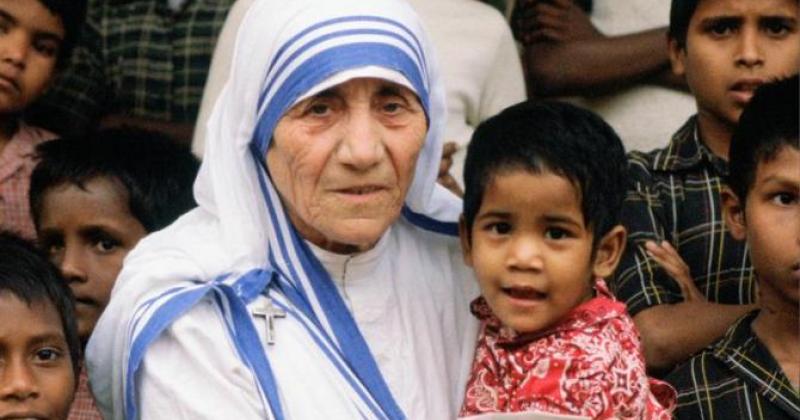Pope Francis is canonizing the “politically incorrect” Albanian nun who devoted her life to looking after the poorest, giving them back their dignity
Just 50 years after pontifical approval was granted by Paul VI in 1964, Mother Teresa of Calcutta’s Missionaries of Charity have grown from around 100 or so members to over 5,300 in 758 centres across the world. But it would be a huge mistake to read the story of this slight, Albanian woman, full of wrinkles, fragile as a butterfly but brave as a lioness, in the light of statistics or numerical “successes”. Mother Teresa placed her unconditional love for the poor and the least, at the very heart of her life and therefore of her testimony. She showed this love to the poor and destitute, taking them off the streets of Kolkata. In most cases all that she managed to do was ensure they had a dignified death, surrounded by love. That love which they had never felt as beggars or as outcasts of India's caste-driven society.
This great little nun who is about to be proclaimed a saint did not found an NGO. A crucifix with the message “I thirst!” has always dominated the entrance to the Missionaries of Charity headquarters. Jesus’ words on Calvary. Love for the poor, assistance to those whom nobody wants to help, touching and healing, was inspired and strengthened every day through prayer: An hour of adoration and a total of three hours of prayer each day. “Don’t you think this was a long time to dedicate to prayer?” a visitor asked one day. “No,” Mother Teresa replied, “our work could not be done if it weren’t for Christ’s love and grace. Those hours of adoration are our strength.”
Another important aspect of her testimony was her ability to be Indian among Indians. She didn’t show up as a western missionary with a mission to proselytise. She simply wanted God’s mercy to shine through among the poor. Leaving it up to God to work on the hearts of those who met her. India, a country that has always been very sensitive to religious meaning, observes Fr. Piero Gheddo, didn’t see her as someone who healed the sick but as a human sign that God was present in those poor people and those nuns”. This was evident at her state funeral in 1997.
Mother Teresa didn’t make any grand plans, complicated pastoral projects, media strategies or religious marketing. She looked after the first leper she met along her journey. Then the second, the third and so on. Recognising the face of Jesus in the faces of suffering men and women abandoned on the side of the road. Simply because this is what Jesus asks according to chapter 25 of Matthew’s Gospel. She didn’t ask for grandiose structures and total tranquillity for the nuns, who are required to live a sober life marked by sacrifice. She didn’t want bank accounts to guarantee the future of her congregation and spent everything she received “because the greatest danger we face is becoming rich”. She showed that when there is love, guidance and closeness, there is not one life that is not worth living right to the very end. She did not go and evangelise the poor, but let herself be evangelised by them. “The poor are the reserve of humanity we are all in need of, the reserve of love, the reserve of the ability to suffer and rejoice,” she said. “They give us more than we give them.”
She went still does go “against the grain” because she herself experienced a long and dark period of doubt towards the faith. She was unable to hear the voice of God for many years. This incredibly human and tragic experience takes her a million miles away from any hagiographical image on a holy card. She went and still goes against the grain in her defence of the family and life. In the speech she gave when she was awarded the Nobel Prize in 1979, she said: “I feel the greatest destroyer of peace today is abortion, because if a mother can kill her own child - what is left for me to kill you and you kill me.”
But she also went and still goes against the grain in terms of the role of women. In terms of those who, on the basis of old agendas, thought that the way to enhance the role of women – which rea=mains to be done in the Church - was by “clericalising” them, making them priests or ordained deaconesses. Mother Teresa held no institutional power within the Church but cardinals and Popes alike bowed before her. She also went and goes against the grain when it comes to the kind of Catholicism that is wrapped in do-goodery and doctrinalistic “obsessions” and appears irritated by the Church’s insistence on concrete and unconditional love for the poor. Were she alive today, Mother Teresa would be on the islands of Lesbos or Lampedusa, tending to the wounds of migrants and refugees.
